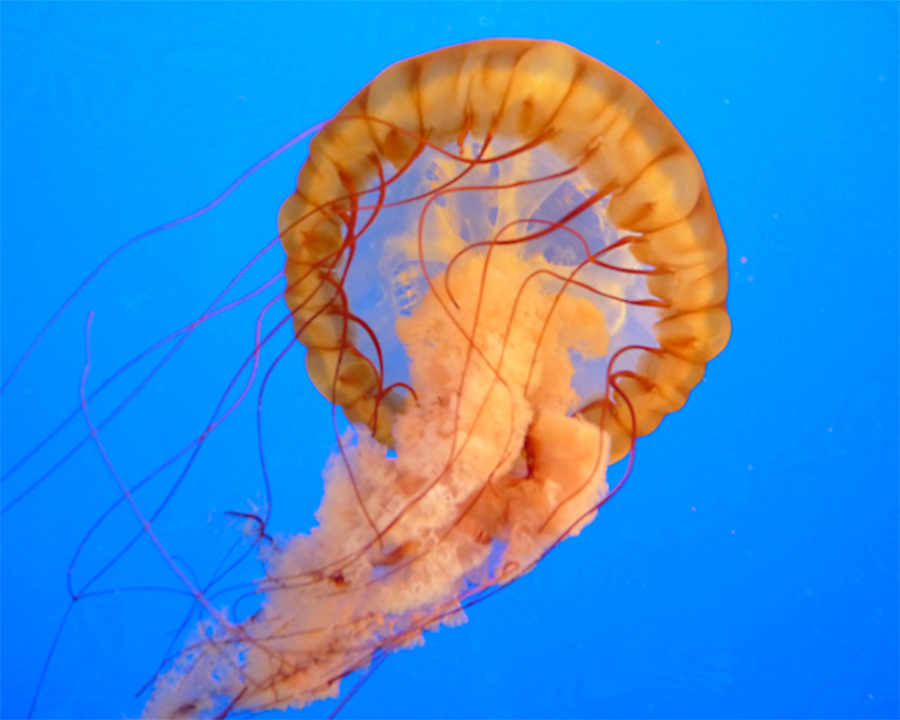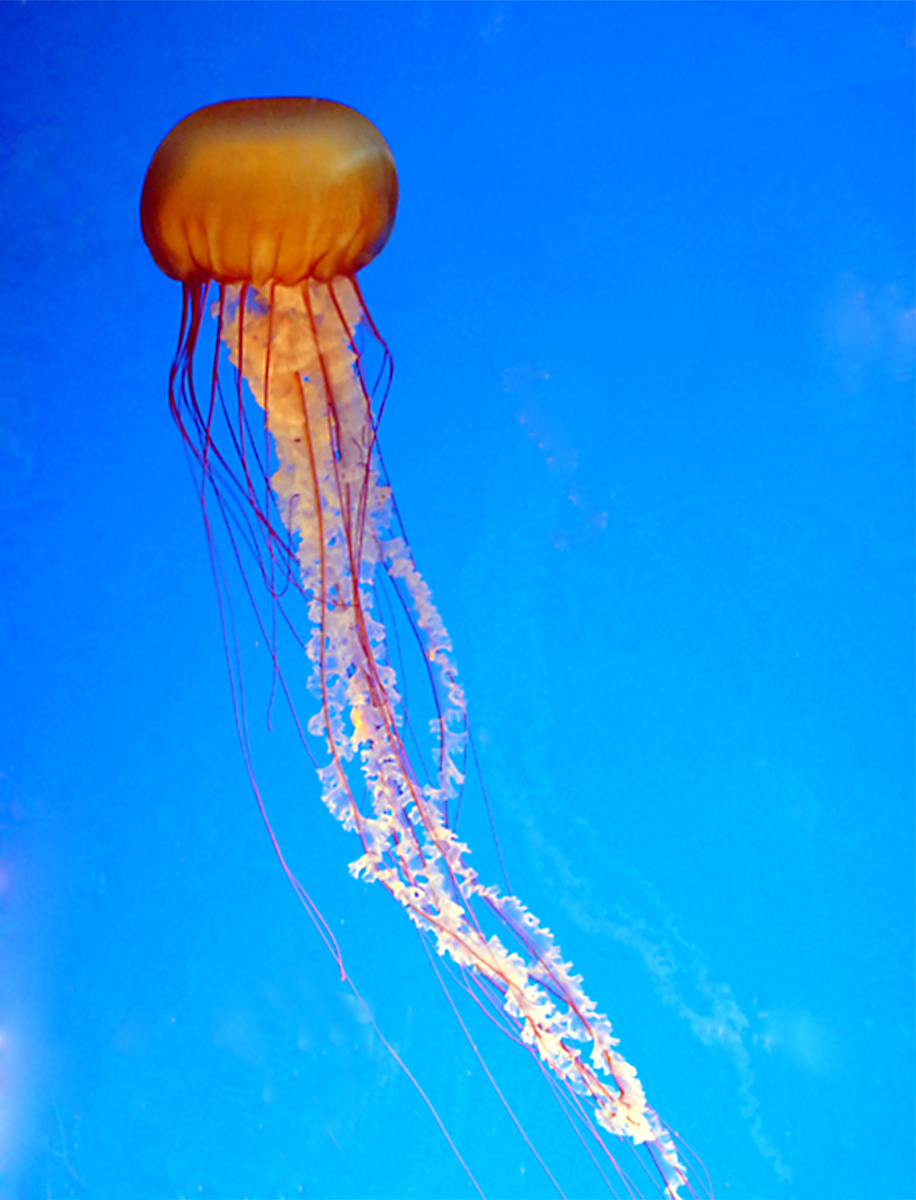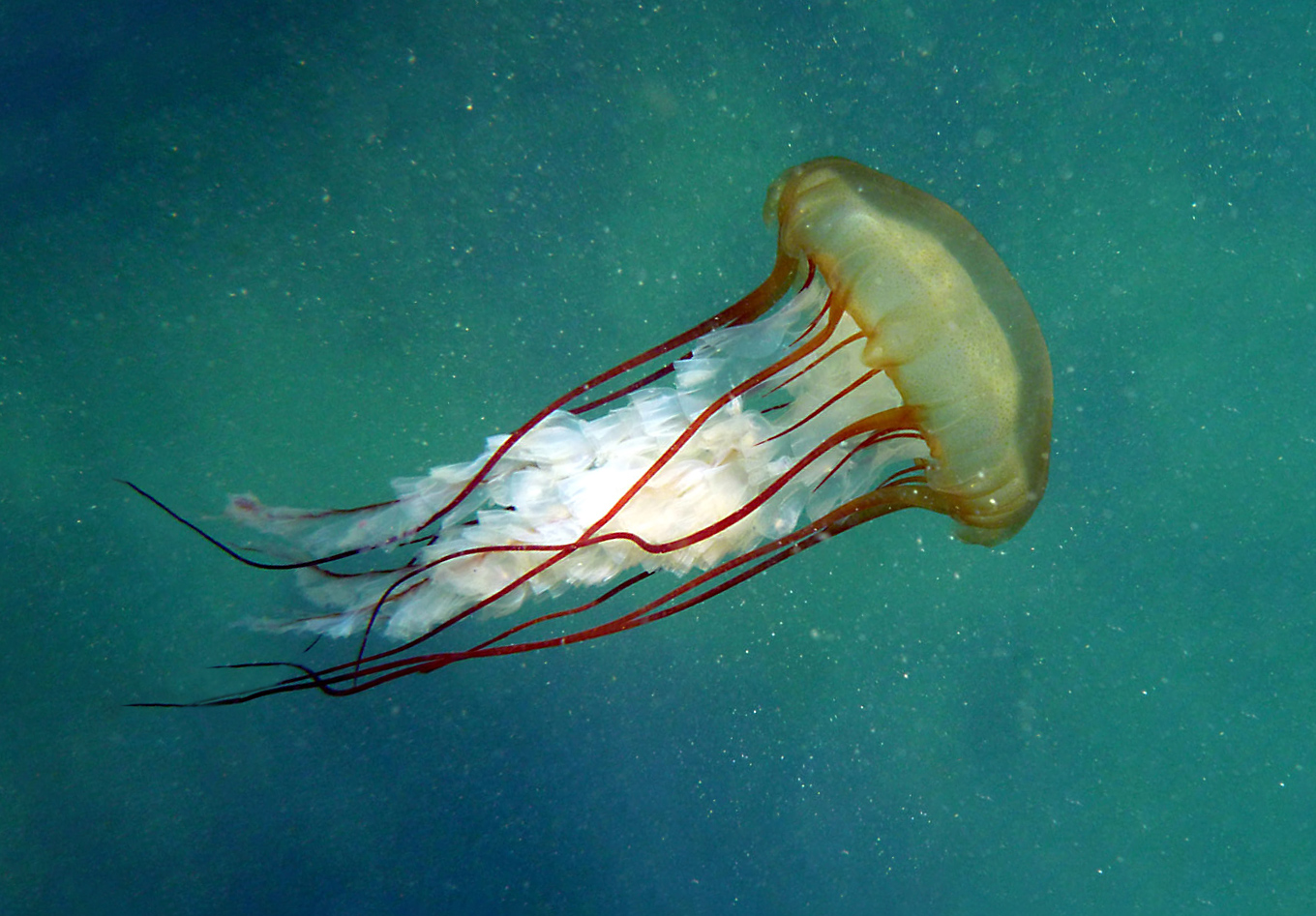Authors: Stephanie Hurst & Chelsea Dinh
Scientific name: Chrysaora fuscescens
Size: Bell diameter up to 17.7inches (45cm)
Identifying features: The Pacific Sea Nettle has a bell with a diameter of approximately 17.7 inches (45 cm), and oral arms which range between 12 to 15 feet (3.6 to 4.8 m) in length; this cnidarian has 24 long brown tentacles, and four long frilly oral arms. The bell’s overall color ranges between an amber yellow to maroon and is darkest at the edge of the bell.

Habitat: This Sea Nettle lives widespread across the Pacific Ocean, and it’s range is from Alaska down the coast to California, the Aleutian Islands, Kamchatka, and Japan. Occasionally the Sea nettle becomes a way of transportation for young cancer crabs, and larvae which adhere to the top of the bell, hitching a ride to a more favorable spot.
Pacific Sea Nettles (Chrysaora fuscescens) are often on display at aquariums, such as these at the Shaw Centre for the Salish Sea in Sidney, British Columbia.
Predators: The main predators of the Pacific Sea Nettle are sea turtles and the ocean sunfish. When they are carried into shallow water they can be preyed upon by fish, crabs, and sea stars. To defend against a threat, minor or large, the Pacific Sea Nettle will sting whatever comes in contact with its tentacles that are loaded with stinging cells (cnidoctyes). In the Pacific Northwest this species delivers one of the most painful stings after the Lion’s Mane’s jellyfish.
Prey: This species feeds on zooplankton, small fish, ctenophores, and other jellyfish.


Life Cycle: The male Pacific Sea Nettle releases sperm into the water and they fertilize the eggs of the female sea nettle. The fertilized egg grows into a planula larvae where they adhere to an area of the ocean floor. The larvae then develop in to a polyp and then through an asexual process, begins producing new baby medusa in a structure called a strobilating scyphistoma; the medusas later bud off into the open waters, where they continue to develop into adult Sea Nettles.
Aquarium Photos and video by Stephanie Hurst and Chelsea Dinh
Wild Photos and video by D. Young
References
Aquarium of the Pacific (2011) West Coast Sea Nettle. Aquarium of the Pacific. Retrieved May 27th 2011 from www.aquariumofpacific.org/onlinelearningcenter/full_description/west_coast_sea_nettle/
Monterey Bay Aquarium Foundation (2011) Sea Nettle on Exhibit. Monterey Bay Aquarium. Retrieved May 27th 2011 from www.montereybayaquarium.org/animals/AnimalDetails.aspx?enc=LeWQvjcLBGScbfBrDNhDNA

